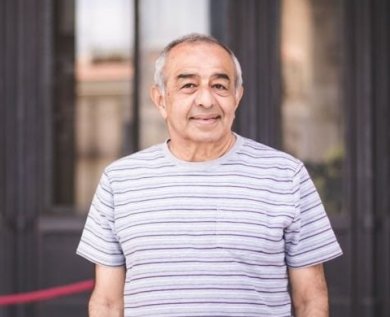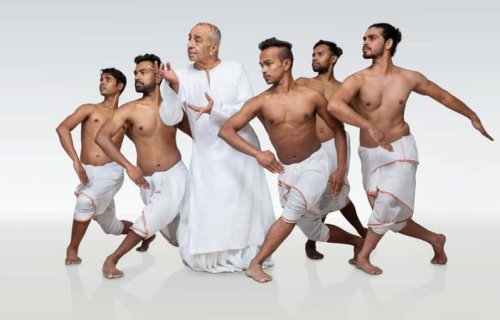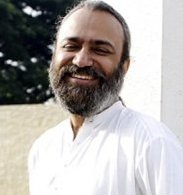 |
  |
 |
  |
Astad Deboo (1947-2020) - Ashish Mohan Khokar e-mail: khokar1960@gmail.com December 11, 2020 Astad Deboo was a lone ranger. His whole life in dance was a quest for an inner urge to express and he traversed the globe many times over. In fact, he is the only Indian dancer who has been to places many have only heard of but never been to: Mongolia, Morocco or Machu Picchu. Add Bolivia, Belarus or Buenos Aires. Sudan, Sweden, Seoul. Astad flew so much he could've owned an airline by now!  His dance was his own. It was like an amoeba, forever evolving a new shape and dimension and no one could state when it was Indian or when international. Or when traditional and when modern. He had a smattering of basic learning of Kathak and Kathakali, neither of which he really mastered and this showed in his dance: neither fish nor fowl. This worked to his advantage because while he lacked one form to build upon - like many others did - he was also not bound by it. Movements were borrowed from here and there, an Indonesian bent-at-90degree arm superimposed on a Chhau stance. He was neither modern nor ancient. He was just him. His music sense was superb and he used works which were new to the palette. For opening of Ford car factory in Gujarat, in 1990s he used Dhrupad singers the Gundecha brothers and performed on the parapet of Champaner fort, outside Baroda. For Rituals, he used Gregorian chant and the effect was mystical. For later works he used Japanese music which was minimalistic. Astad came to dance by chance; this Navsari (Gujarat) born boy had no dance in the family. Moving to Bombay was the best thing that happened to this Parsi boy. He saw much and was inspired. He took off from where a real pioneer on modern dance in India left off, a Parsi girl called Uttara Asha Coorlawala. She was truly unique and shone in the solo modern dance culture of Mumbai in the late 1960s and early 1970s. Her shifting to America gave Astad a chance to dance freely and establish himself, a position he maintained for four decades or more. Astad was a first rate professional and used best lights and technical inputs he saw and absorbed abroad like from Pina Bausch's school in Germany. In the end, while he was open to many influences, his dance was eclectic and his own. He created anew from within tradition and worked much with various forms, either because he had no form or firm foundation of his own, or because he was open to all. In his slow-down years of 60s, he made minimal movements because his body could not muster more strong movements and also wisely, he didn't want to bite more than he could chew. So he eschewed hard stances and just danced on like a dervish. Astad had everything going for him but he generally looked sad or melancholic, got angry easily especially before shows but off stage was amused at the world and smiled nevertheless. His self discipline made him not eat 2 days before a show or shoot because his stomach might show. How many dancers even bother about their bodies?  Photo: Ritam Banerjee He took on young boys to platform in group choreographies, thus promoting Thang-ta from Manipur or Theyyam from Kerala. In his end years, he was prone to more group works. His solo experiments were becoming repetitive. His earlier works included dynamic props and puppets by Dadi Pudumjee school and Puran Chand. Astad was open to influences. Astad was the last link between pre-independent India and modern. He tried his best to bridge the dance divide. He attended many shows, sitting quietly in the last rows, never seeking attention because the world was his stage and he had got much: SNA award and Padma Shri were bestowed on him too. That in the end, stage 4 cancer claimed an unusual dancer, is a sudden, sad act and fact. Astad must be remembered as a quiet light that shone and showed the way to many more. Alwida, Astad.  Dance historian and critic of repute, author of 25 books, 4000 articles in mainstream media in last 40 years; editor of attenDance for last 20 years; creator of 85 modules for UGC e-pathshala, Ashish Mohan Khokar is also an ace arts administrator, museum designer, archivist, mentor and danceologist. Currently helping the IGNCA, Delhi organise MKDC and create India's first dance archives and museum in Delhi. Detailed bio on attendance-india.com Comments * It's difficult to fathom the death of a vibrant dancer like Astad. I have seen Astad since early 70s. When I read your article in Narthaki, a number of visuals were vivid in front of my eyes... how truly you have described them in your article. Your portrayal about the evolution in his thought process hit the core without unnecessary adjectives. (Dec 17, 2020) * Lovely tribute, specially liked the last 2 lines. - Cfria * Very interesting to read about Astad Deboo ji. There were so many things I got to know about him! I remember watching him on TV while growing up......first introduction to a male dancer in a contemporary style.....I was extremely fascinated by his dance moves!! Dance has always been a part of my life in some capacity and I am currently learning Kathak from Guru Sampada Pillai. She shared this with us students so I thought I would add my thoughts! I am sure he's dancing away now too.... (Dec 12, 2020) * Thank you very much, Ashish. Astad might break into a wry smile if he read it...! - Uttara Asha Coorlawala (Dec 12, 2020) Post your comments Please provide your name and email id along with your comment. All appropriate comments posted with name and email id in the blog will also be featured in the site. |